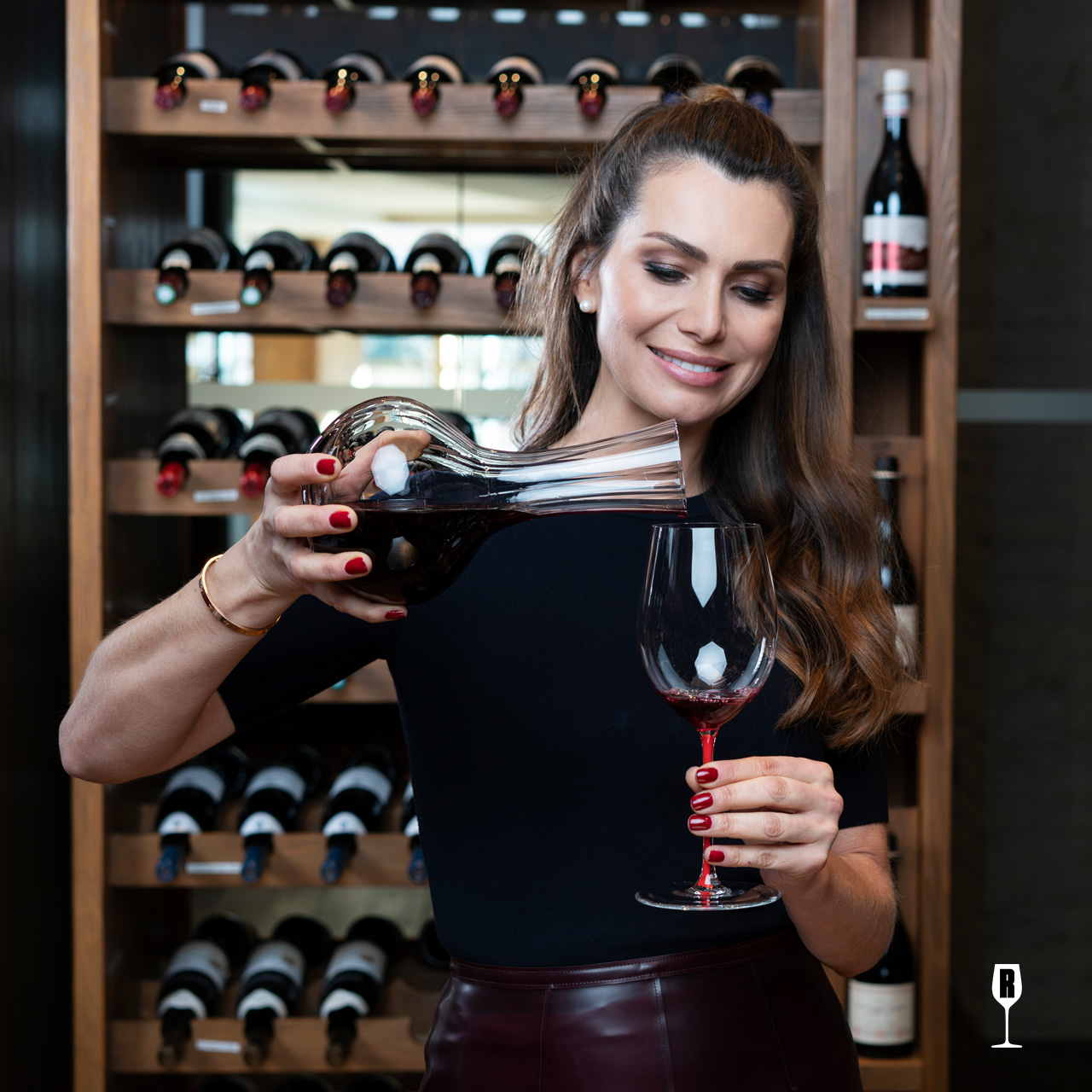
Photo Courtesy Riedel Wine Glasses
You are planning to go to your first wine tasting at a winery. This adventure can be both exciting and intimidating. For those new to the Wine Trails of California, or any state for that matter, it may seem like certain wine and winery protocol and understand is required to enter the world of wine. The goal here is to provide some wine tasting tips that will help you to enjoy the winery experience. If you consider yourself knowledgeable about your winery adventures and tasting wine I hope that you enjoy these reminders.
While it is good to understand some basics you do not have to become a wine expert to enjoy you visit. With a little knowledge you can calm any pre-tasting jitters that you might have. While wine tasting at wineries and tasting rooms have some common etiquette, it is still about enjoying yourself and the wines that are served during your visit. Here are a few tips and important points to keep in mind to help you step up to your next tasting with confidence.
You Are in The Tasting Room - What to Expect
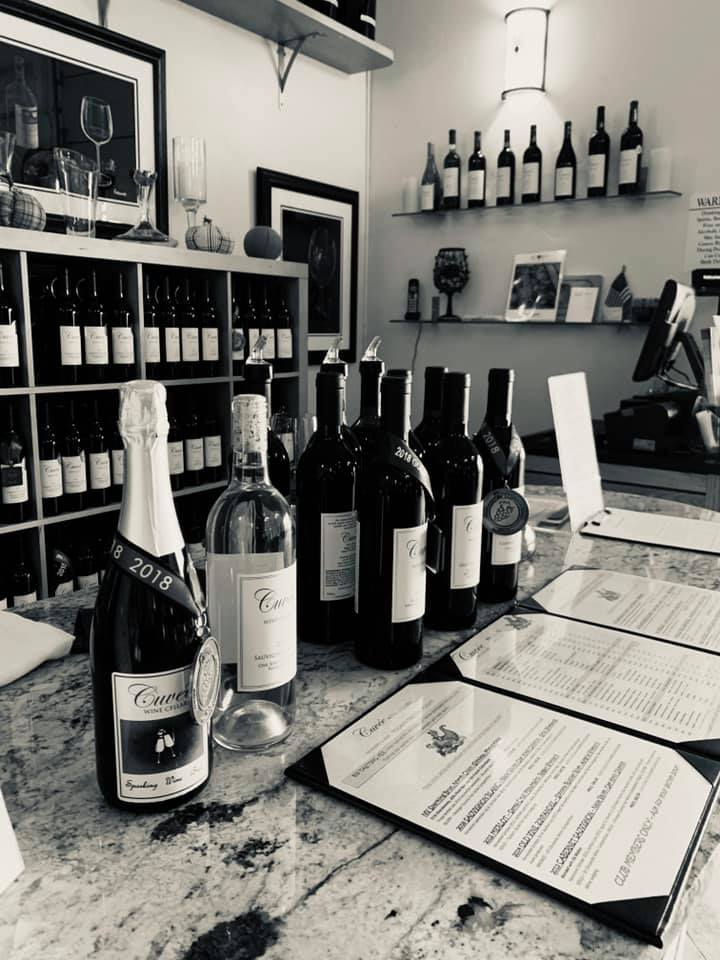
Photo Credit Cuvee Wine Cellars - San Carlos, CA
A tasting consists of paying for a set number of different wines for you to sample. The person serving you in the tasting room will talk you through the choices that are available, introducing you to the different grape varieties and their characteristics or profiles. As you taste each wine in a suggested order, you will usually receive more information at each pour to guide you through you tasting. At some winery tastings you might find that the tasting also includes tours of a vineyard, cellars, or production areas.
5 Things to Remember to Do While Visiting a Winery Tasting Room
Go in With an Open Mind
It’s never a bad thing to know what you like and don’t like, but wine tasting is the perfect time to experience something new or give a flavor you haven’t liked in the past, and to give it another try. I cannot count the times that I have been pouring for a particular winery and a tasting event and someone would learn the type of wine I was offering to hear; “Oh, I don’t like Chardonnay’s,” of “Oh, know I don’t like Cabernet Sauvignon.” Here is something to think about while visiting any winery. Remember, you are tasting, whether it be white wines, red wines, or dessert wines. You are not committing to buying a bottle of everything you sip. You just might find your new favorite wine.
Be Patient
The beauty of California’s Wine Regions is that those that call it home can enjoy a quieter and slower pace of life—that is exactly what locals love about living in their corner of wine country. If we pause for a minute, isn’t that exactly the pace most of us visitors enjoy during our vacations or daytrips to do a little wine tasting? Something to keep in mind that during the summer months, when the tasting rooms are their busiest, it’s possible that you may feel a little impatient. To be sure those serving as the winery’s hospitality team work hard to ensure everyone is having a wonderful experience. Isn’t that why you are there? Sometimes we just have slowdown a little so we can genuinely enjoy life in wine country. If you are a little like me, you may just never want to leave!
Cleanse Your Palate
Be sure to take a bottle of water or two along or, if water is provided, it’s a good idea to take a sip or two between each pour to cleanse your palate of the wine you just tasted and prepare for the next wine. This is especially helpful if you plan to visit more than one winery that day. There may also be crackers or other small bits to be had. Just keep in mind that these are provided to help you cleanse your palate — they are not a substitute for a meal. More about that later.
Spit or Use the Dump Bucket
It may come as a surprise to some new to going to tasting that it is perfectly fine to make use of spittoons, or a personal dump bucket during a wine tasting. Spitting wine is important because you cannot have a nuanced tasting if intoxicated. It is also an appropriate and acceptable way to move on from something you are not loving. Especially when you are visiting multiple wineries, or tasting rooms in one day, it can be a good idea to restrain your wine consumption by spitting or dumping.
Ask Questions
If you would like to know the background or method behind the making of a certain wine you’re tasting, feel free to ask away. This is a great way to become more familiar with grape variety, terms like malolactic fermentation love it when I am at a smaller winery and the owner and or winemaker him, or herself is doing the pouring. I love the winery experience, talking with the people whose passion is displayed in the glass of wine you are tasting. In learning how, when, and why they decided to be a winemaker.
When it comes to wine tasting, there are no stupid questions. In fact, asking questions shows you are there for more than just drinking wine, but rather, you are there to enjoy the winery experience and all it has to offer you during your visit!
5 Things to Avoid While Visiting a Winery Tasting Room
Avoid Wearing Fragrances (perfume or colognes)
This sounds a little strict for those of us that have our favorite perfume or aftershave of cologne. Still, any wine professional will tell you that scented body products, from perfumes to aftershave, leave a cloud of scent around you that can substantially detract from the tasting experience not only for you, but for everyone around you.
A big part of the wine tasting experience is the aromas, and wearing a strong perfume or aftershave is the fastest way to spoil that factor of the tasting for yourself and others. Competing fragrances can also alter your perception of how the wines taste. That is why it’s best not to wear any fragrance at all when you visit a winery or tasting room.
Another little, yet important tip if you want to keep your tastebuds keen and sharp. Be careful to not brush your teeth too close to your wine tasting. The same is true for eating mints, chewing gum, or even strong or spicy foods before your tasting as that can make your wine tasting experience less than stellar. This is because of the oils used in those products cling to the palate and shroud the taste of the wines. There is nothing worse than an elegant Chardonnay that wreaks of some aftershave or even a minty-fresh toothpaste!
Avoid Drinking Too Much, Too Fast
Wine tasting is supposed to be fun, and it is perfectly fine to drink a bit and have a good time. It is especially true, if you are new to the experience, one can easy to drink more than intended, and intoxicated tasters are notably annoying. It is not necessary to follow some planned out or dictated tasting method. Simply following these steps and taking your time with each wine can help you get the most out of each pour and help you avoid drinking too fast:
Remember the 7 S’s of wine tasting?
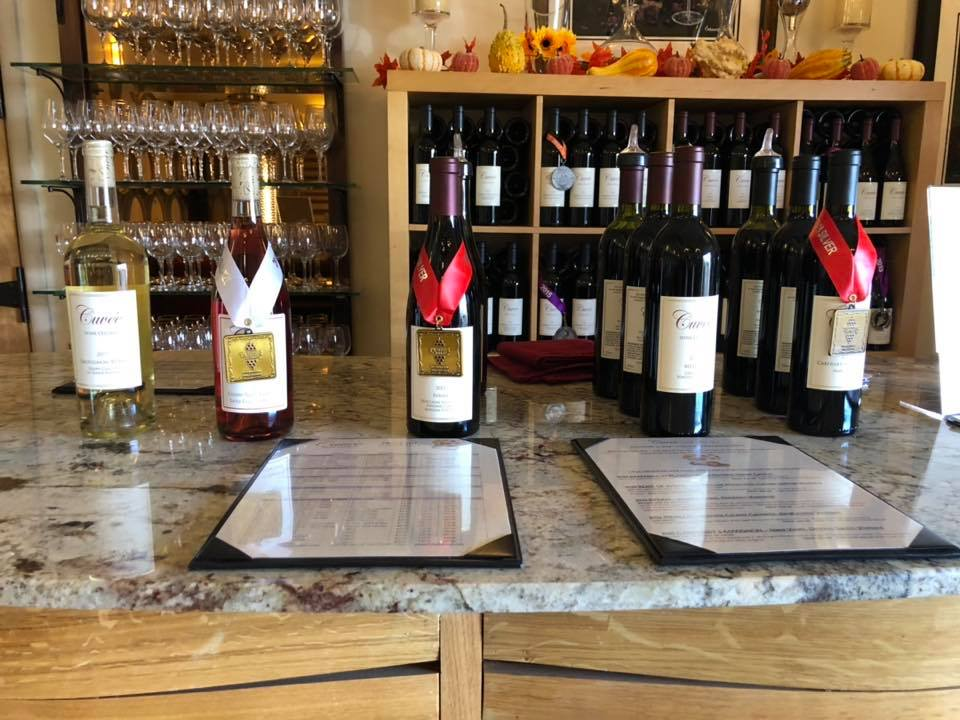
Photo Credit Cuvee Winery – San Carlos, CA
See
Hold your glass up to the light, then look through the wine. The color of the wine will give away some of the basic secrets to the wine and will help guide you for the rest of the steps. You are beginning using one of a number of your senses. Darker wines tend to be bolder and heavier than lighter wines which are crisper and refreshing.
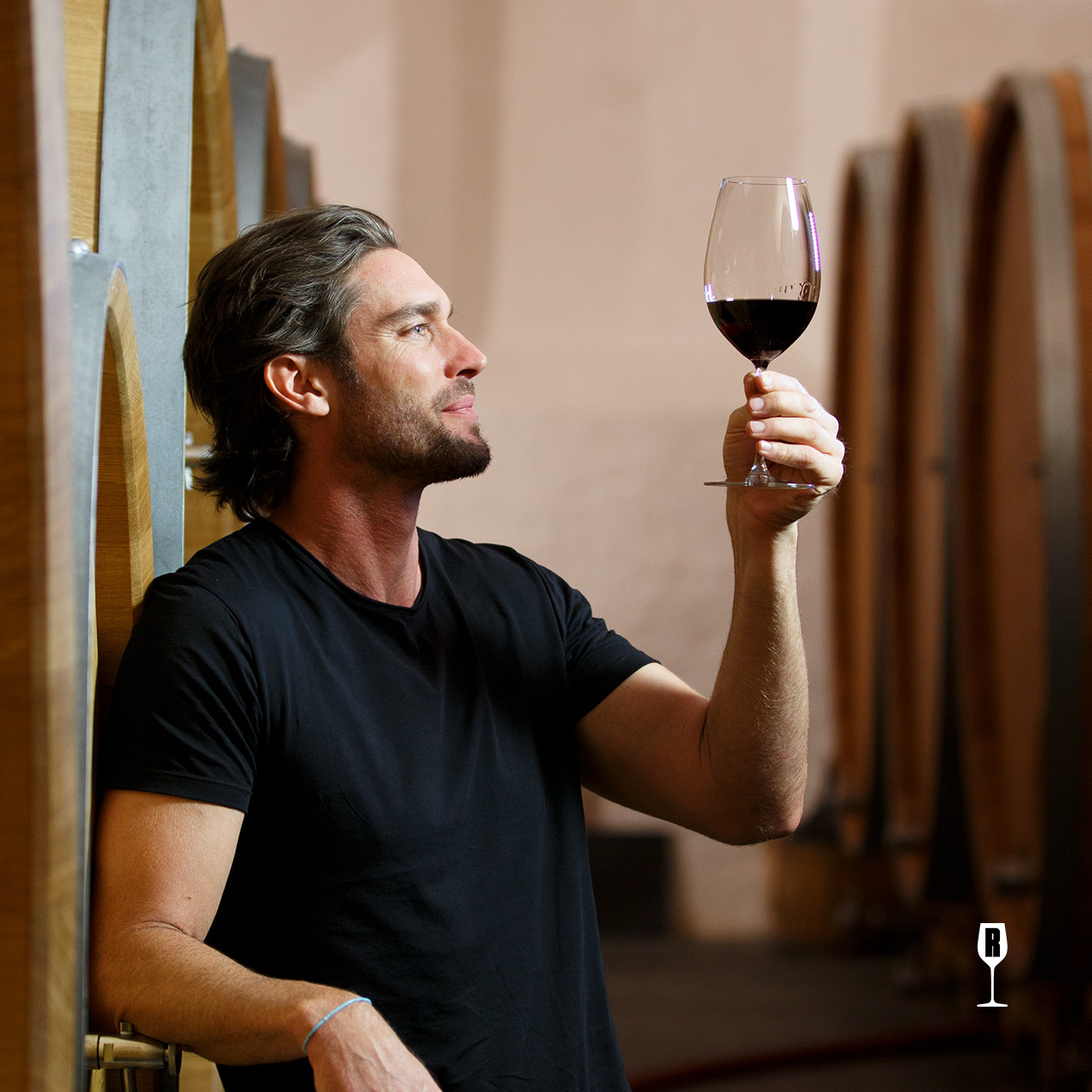
Photo Courtesy Riedel Wine Glasses
Swirl
Air is beneficial for a wine. Proper aeration of wine helps to improve flavor by increasing the amount of scent produced. All though there are a few old-world winemakers that consider their wines ready to drink from the bottle as they intended. Still, swirling the glass gently will infuse air into the wine and allow scent molecules to leave the liquid and enter the air in the glass. If you are concerned about spilling some wine, try putting the glass down on the counter or table and move the glass around in circles.
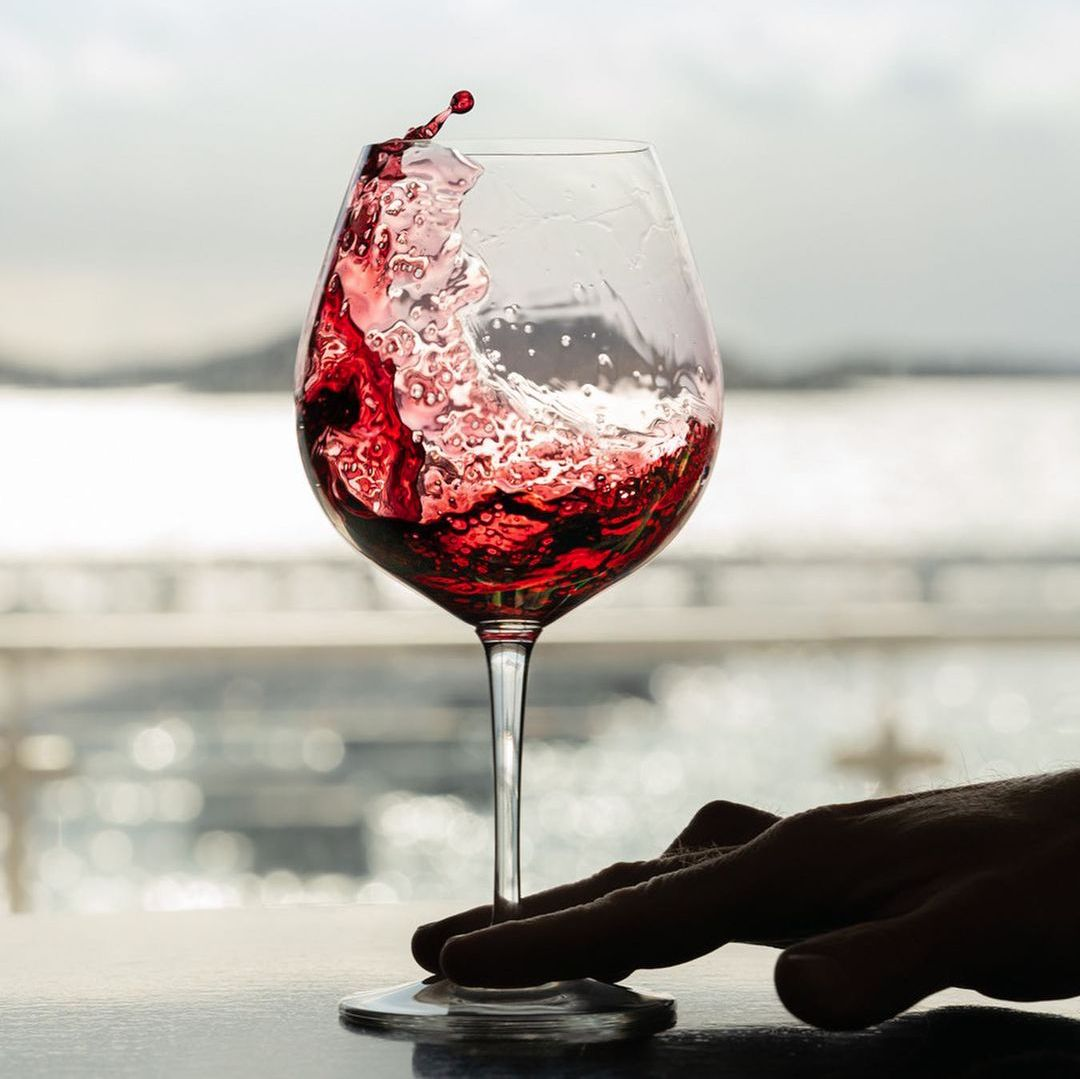
Photo Courtesy Riedel Wine Glasses
When wine coats and drips down the inside of the glass it is known as “legs.” Higher alcohol levels cause more legs than lower alcohol and a sweeter wine has thicker and slower dripping “legs” on the sides of the wine glass.
Smell
Start by putting your nose partway into the glass and taking a slight sniff. I like to tilt the wine glass a bit to the side then approach it for the side. As you take in the aroma of your wine try to learn what the wine smells like or reminds you of. Good news here, there is now wrong answer! Each person will smell something different or have different choice of words to describe the same smell. One person may describe a wine as “oaky “or “woody,” while someone else may say it makes them think of smoke, while yet another person may focus on dark fruit and so on. A lot of the terms you will use to describe the wine will be based on your memories or experiences.
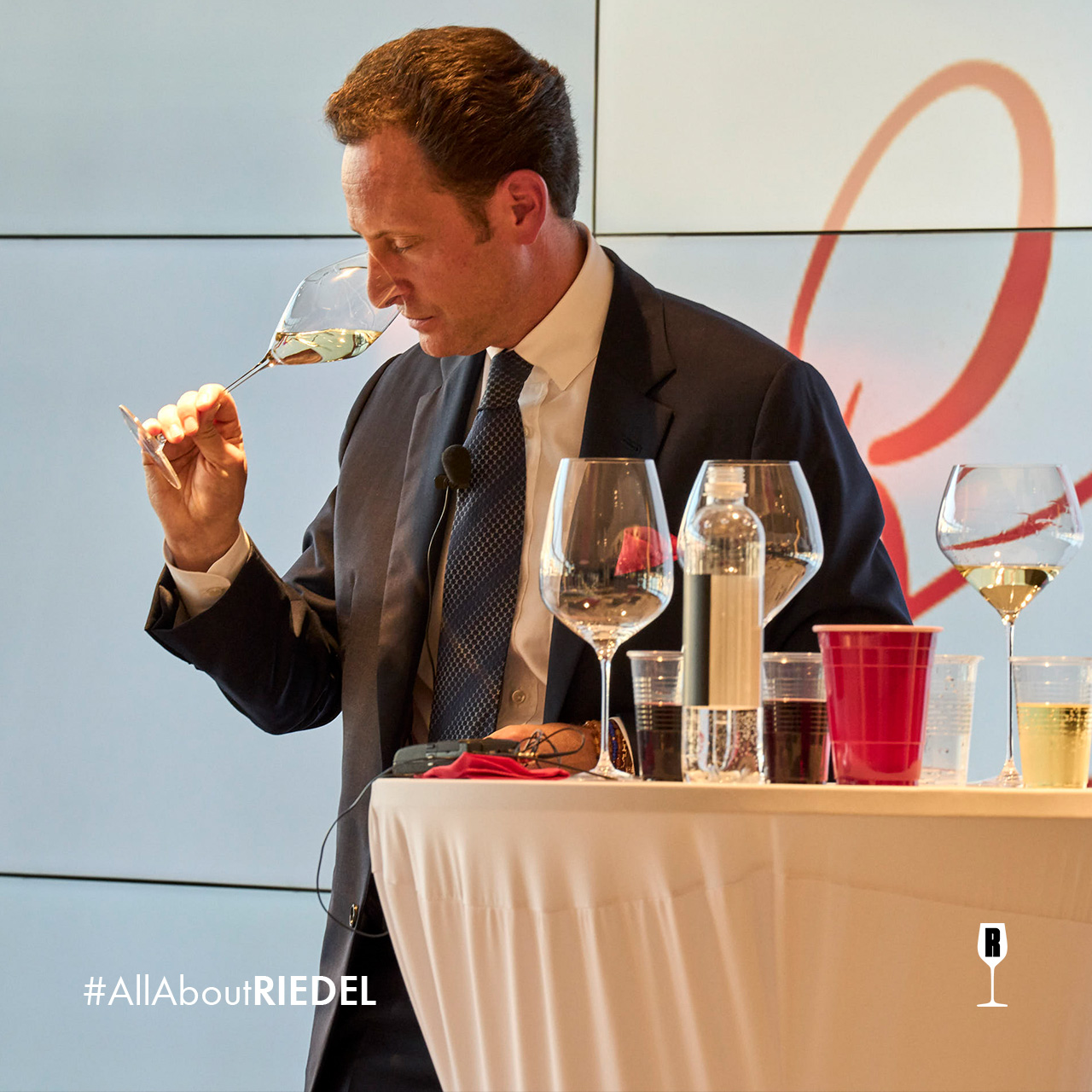
Photo Courtesy Riedel Wine Glasses
What to look, smell, and taste for with White Wines. With White Wines, look for White Fruits: think of fruit aromas a the tase of lemon, lime, orange, grapefruit, pineapple, peach, pear, or apple. As for Red Wines, you will want to look for Red Fruits: cherry, blueberry, plum, blackberry, raspberry. Most of the time, look for those flavors and smells and you will find at least some.
After having tried several different wines and over time you will begin to detect in some wines Floral notes, think of rose, hibiscus, violet, herbs, and Veggies such as cut grass, oregano, bell peppers. You may detect in some red wine tobacco or leather. Also, you will begin to detect spices like black pepper, licorice, woodiness, oaky, coffee, nutty, roasted nuts, and so many more!
Sip
As you take that first sip of wine swish it around in your mouth, and then swallow it. Just ignore this first sip. That very first sip tells you little to nothing about a wine. However, your first sipe will coat your mouth and prepare you for the wine. As you continue to sip do not take too much wine with each sip, as you need three sips to really experience what that glass of wine has to offer. What are the primary aromas that you detect? Do you notice fresh fruit aromas, or perhaps dark cherry? White a white wine such as Chardonnay or Sauvignon Blanc does your nose detect fruit aromas? This how we learn how to taste wine.
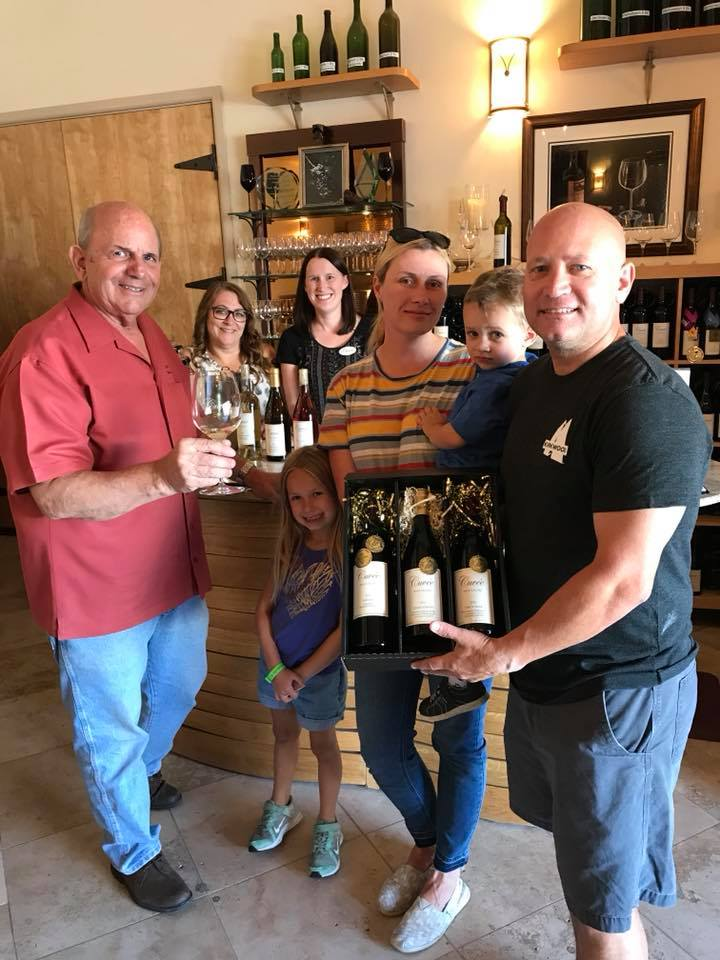
Photo Cuvee Wines – San Carlos, CA
Slurp
Try this as you take your second sip, and this time pucker your lips and draw in some air into your mouth and the wine, or slurp. Do not be so exuberant in doing so as to have the whole winery can hear. You just want enough to get some air into the wine and really open it up. Move it around in your mouth, chew it, play with it.
Start looking for different flavors. As with smell, with red wines look for red fruits, white wines seek out white fruits. There are no right or wrong answers, this is a personal experience. Eventually you will start learning certain grapes tend to have certain flavors. For example, with a Riesling you will detect apple, and with a Chardonnay note of citrus.
Savor
Take your third sip and just enjoy it. This is the time to think of what dish would you pair this wine with, what special occasion to serve it at, or who would want this as a gift. After your having seen/swirled, smelled, sipped, and slurped, if this is a wine that you want to purchase, now is time to get a bottle. or two of your own.
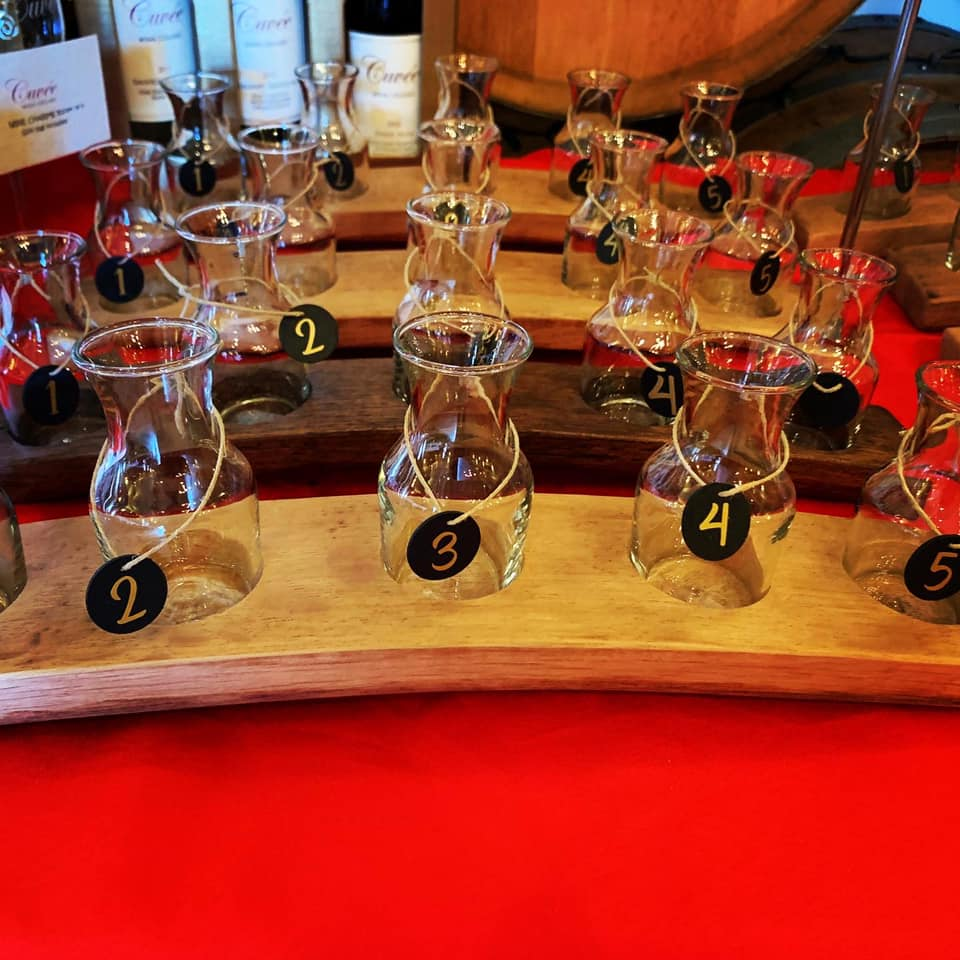
Photo Courtesy Cuvee Wines - San Carlos, CA
Spit! Believe it or not, it’s okay to spit the wine after you taste. The point of tasting is not to get drunk, it’s to try new wines, learn, and know if you want to purchase it. Spitting in public is usually not looked upon as good manners but spitting during a wine tasting is perfectly acceptable — especially if you plan to visit several wineries in one. If a winery does not have a spit bucket or something to dispose of the wine, there is no shame in asking for a spit cup or personal dump bucket to use. Ask the person pouring for you for a bucket and in most cases, they will be happy to provide you with one.
Avoid Holding the Wine Glass by its Bowl
At a tasting, always hold your glass by the stem. Holding it by the bowl may seem like the comfortable thing to do, but it also impacts the temperature of the wine, which can hinder you in your efforts to evaluate the wine. Believe it or not, holding your glass by the stem below the bowl of the glass or near the base is one of the absolute musts of wine-tasting etiquette!
Avoid Behaving Like an Expert - Unless you are one...
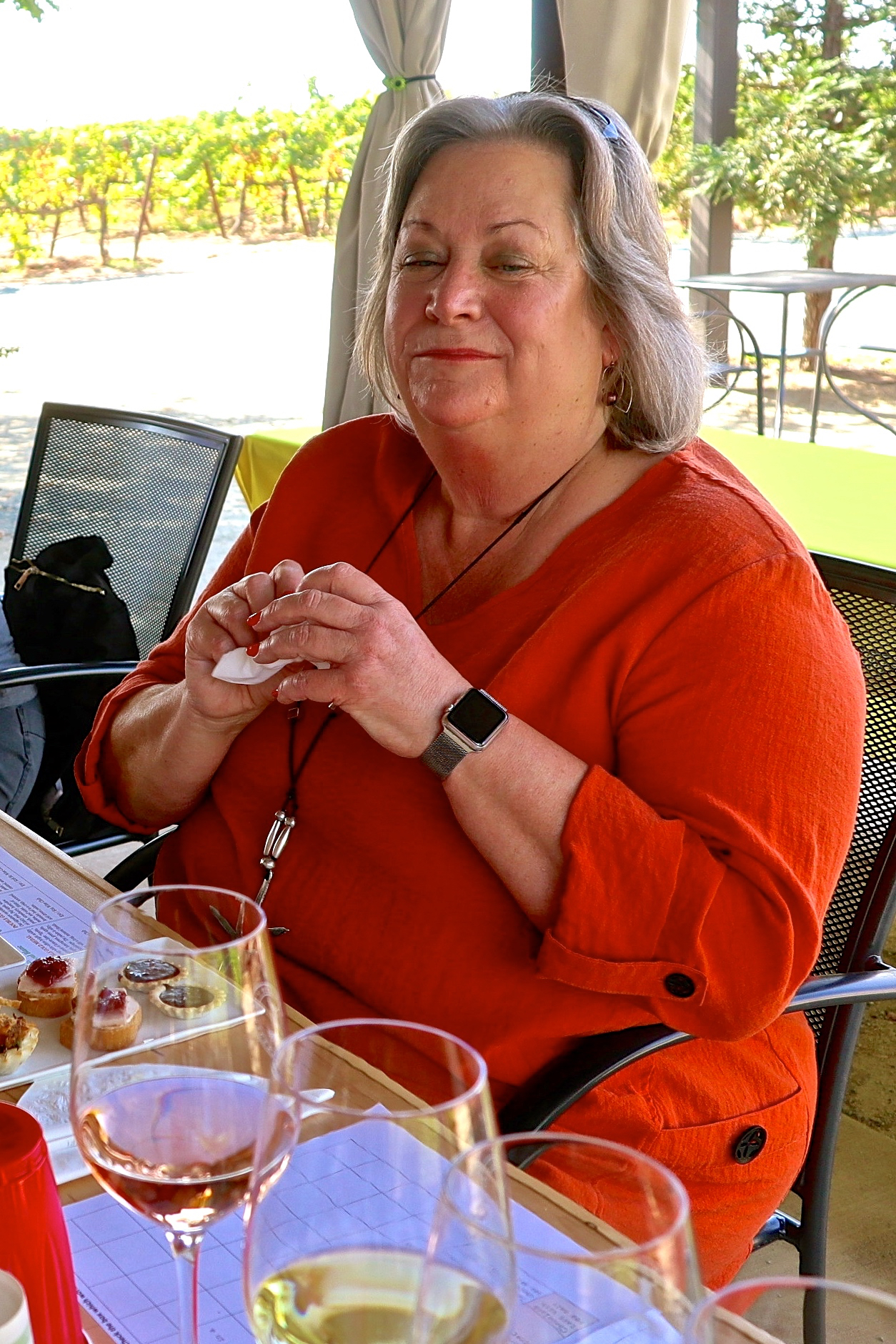
Photo Courtesy Randy Caparoso - Sue Tipton of Acquiesce Vineyards
Always feel free to give your opinion and share your thoughts on the wines with the group but try to avoid acting like a wine snob or a wine expert, unless of course you are one! The wonderful thing about giving your impression of sine at a wine tasting is that there are no absolute “right” answers. Why do I say that? Because your idea of the perfect wine may be completely different from mine, or someone else. So, sip away! Feel free to discuss the wines but avoid being that person who makes the experience more serious than it really needs to be.
Here Are a Few More Tips Now that You Are Equipped with the 7 S’s
What to wear on the wine trail
While there are seldom formal dress codes in Wine Country, wearing something comfortable and casually fashionable clothing is the norm. Even if a winery is considered casual, as wine tasting is for the most part, a more sophisticated activity that one shouldn’t arrive inappropriately dressed for.
First, when it comes to choosing what to wear, my first suggestion is to consider your feet and wear the right shoes for the occasion and activity for the day’s activities. Some wineries have paved walkways and patios, another may have grassy picnic areas for tastings, and yet another may have gravel roadway or parking area. The winery you choose to visit may offer a tour in the vineyard, where dirt and uneven ground will be the norm. Consider the circumstances you will be encountering as you are walking around and tasting in before you pick heels versus flats, closed toed shoes versus those comfortable flip flops.
Second, the most important tip is to bring clothing that you can layer. Lighter clothing, hats, and sunglasses are great for summer months, especially if outdoor activities like vineyard walks and picnics are on your agenda. Being away from remember that even if it is warm during the day, you may be experiencing a cold, temperature-controlled production facility or barrel room during that tour, this is when those layers will be most appreciated. Also, temperatures in Wine Country can often drop significantly in the late afternoon and evenings, so layers and warmer clothing are a good choice.
Lastly, be prepared if you wear white. Accidents happen, even sommeliers and wine experts can spill, so if you choose to wear white clothing while wine tasting, try not to get angry if there’s a mishap.
Have a Designated Driver or, Give Yourself a Gift or a Designated Driver
Driving under the influence is a bad idea no matter where you are, even in wine country. So do yourself a favor and take advantage of local transportation service or one in you group can serve as the Designated Driver. While visiting a wine country destination you can often book a Wine Trolley or shuttle, hire a limousine or, hire a designate driver to drive your car.
When Possible, Make an Appointment Before You Arrive for The Best Winery Experience
While there are quite a few wineries that accept walk-ins, making an appointment ahead of time is a great way to ensure that you’ll get the time and attention you are looking for. Feel free to consult the Visitors Bureau website to the Wine Area you intend to visit ahead of time, then look at the individual winery websites to get a feel for the experience.
Also, be sure to consult our Winery Director on our website to determine the best winery or tasting room for the experience you want to have, whether you want to find a kid-friendly winery or enjoy a picnic, or even plan to take your dog along while you’re there. Booking appointments is a great way to ensure that, no matter how busy a winery may be, that they have time set aside for you.
Don’t Drink on An Empty Stomach
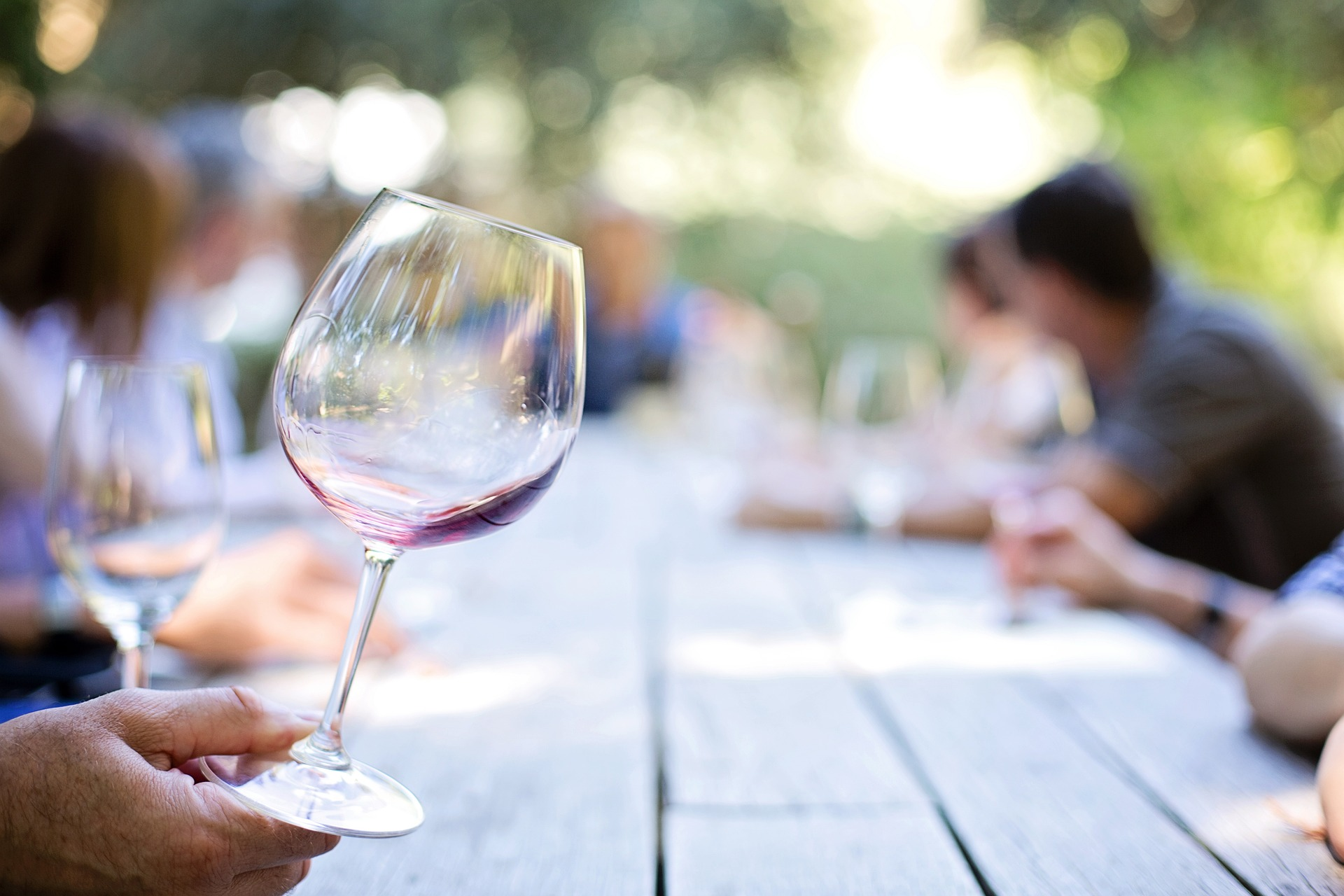
Photo Credit – Old County Cellars – San Carlos, CA
Before you arrive at a tasting room or winery, it’s always smart to make sure you’ve had a good meal to start the day. Tasting on an empty tummy is the fastest way to over-imbibe and believe the pros: there is nothing worse than a wine hangover! When you drink responsibly, with food in your stomach, you can manage to taste more with less fear of indulging too much.
Wineries that serve food offer anything from wood-fired pizzas to gourmet sit-down tasting menus. You will find wineries that sell snacks and picnic lunches, and other wineries have picnic areas where you can bring in your own food while enjoying that bottle of wine you just selected.
Consult the winery website or call them directly if you have questions about their offerings. Take advantage of our California Winery Directory if you are planning on visited a California winery. We have attempted to provide basic information for a number of wineries that offer food or snacks, or that have picnic grounds.
Resist Wearing Strong Scents or Eating Strong Flavor-foods Before Wine Tasting
This probably sounds unnecessarily strict, but any wine professional will tell you that scented body products, from perfumes to aftershave, leave a cloud of scent around you that interferes with the tasting process not only for you, but for everyone around you.
If you want to keep your tastebuds bright, also be careful to not brush your teeth too close to your tasting appointment. In that same vein, eating mints or chewing gum before your tasting can also be a detriment to your experience, as the strength of the oils used in those products cling to the palate and eclipse the taste of the wines. There is nothing worse than an elegant Chardonnay that wreaks of Old Spice aftershave or a minty-fresh toothpaste!
Winery Tasting Rooms Are Different from Wine Bars
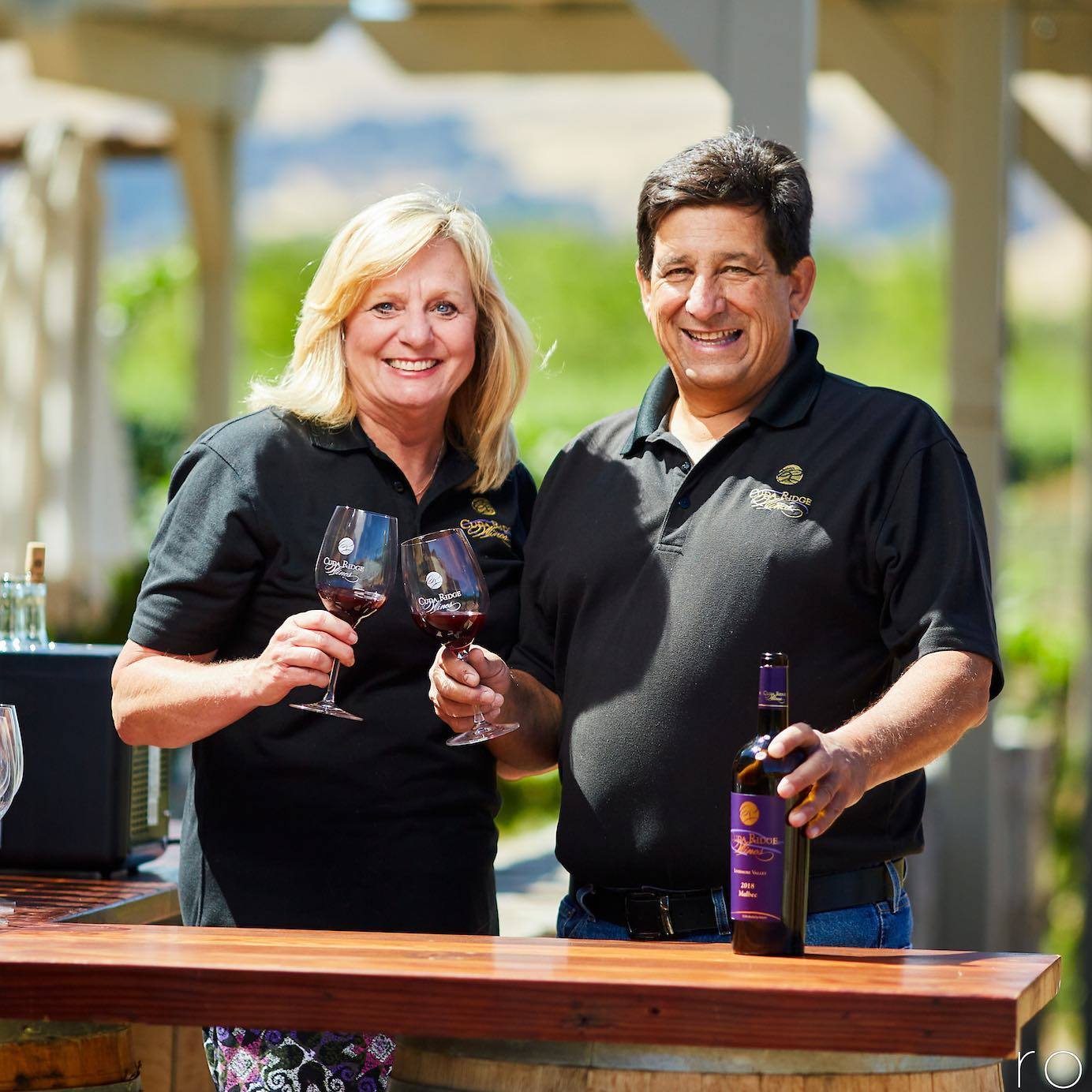
Larry & Margie Dino - Courtesy Cuda Ridge Wines - Livermore, CA
When you show up to a tasting room, the tasting room staff will present you with a menu of options to choose from. Larger wineries tend to offer different tasting packages at different price tiers, while smaller wineries offer you a selection of anywhere from three to six wines to choose from. It’s common for most wineries to pour 2 ounces in your glass—that’s about a third of a normal glass of wine. So, when you have three pours, that’s the equivalent of an entire glass.
Because wine tasting is also meant to be an educational experience, it means that it’s polite to keep your voice low so that others can enjoy their experience, as well. Loud bar voices are off-putting in this setting.
Sometimes at the end of a tasting, the staff might ask you if you’d like to retry any of the wines you’ve tasted. This offer is at their discretion, and it is by no means mandatory. If you want to drink more of a particular wine after your tasting is complete, you may purchase a bottle. Best of all, when you make a purchase of two or more bottles, you’ll oftentimes be comped or
Know a Little Basic Wine Talk
You can find online articles and entire courses and books cover the language that comes with tasting wine. For your first tasting, know the basic phrases or expressions that describe what you see, smell and taste can be helpful.
Our taste buds pick up sweet, savory, salty, sour, and bitter. These and other already familiar words used with wine as well and are good starting points for beginners. Some other descriptive words are acidic, dry, creamy, butter, light, medium, and heavy.
What are some of the different wines you will likely find? Among the red wines you will likey find Cabernet Sauvignon can be found for tasting as a varietal or as a blended red wine. Pinot Noir, Zinfandel, Syrah, Petite Sirah, and Merlot are often among wines you taste buds will encounter during your visit to many a tasting room.
What of the white wines? In California wine tasting rooms and wineries, you will find a lot of different wines for your tasting pleasure as well. Sauvignon Blanc, of course Chardonnay, Semillon, Riesling, Viognier, and a number of white blends.
Semillon is a much lesser-known varietal to many. If you have opportunity to taste wine made from this grape, what can you look for? Most wine wines are known for their crisp and tart flavors that leave a clean and fresh taste. When you have opportunity to taste wine from this grape you will notice a unique caramel flavor on the tongue that lingers for some time after you have finished your first couple of sips. These wines start out with a fruity, light flavor that sits on your light flavor before changing into a heavier taste that leaves a notable coating. The taste experience of this wine sets a Semillon apart as a middle ground between the more buttery chardonnay and the tartness of a Sauvignon Blanc.
As you look for colors and clarity in the wine and then swirl your glass and take in its bouquet. The range of aromas can be wide—fruity, earthy, spicy. You get the idea, and you will hear and learn more in time. People notice different smells and tend to grow their range as they practice, try different types of wines.
Remember - Wine Is Fun
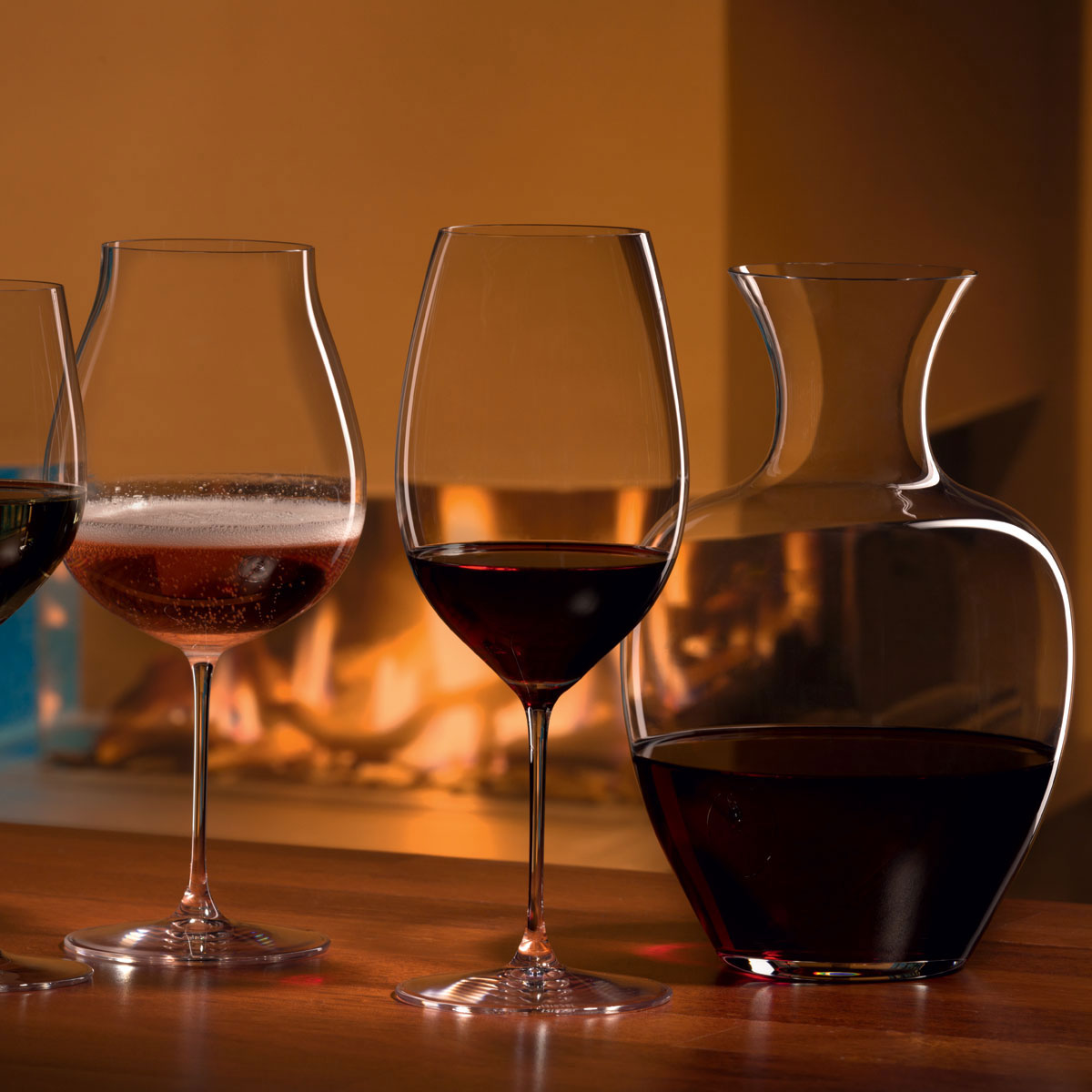
Photo Courtesy Riedel Wine Glasses
While there is so much to learn about wine, there is no need for you to feel that you must become an expert. Remember too that the people who produce the wines, especially in boutique wineries, are down-to-earth wine farmers. Really, it is an American way of thinking to separate the farmer and the winemaker much of the time. At lease this is so for the wineries that produce much of the wine grapes that become their wines.
Have you ever wondered why there are so many different types of wine glasses? You may want to also visit our post on Wine "Tasting Terms How to Use Them"
May you find these suggestions helpful in you next trip to Wine Country. Remember, Enjoy it!
